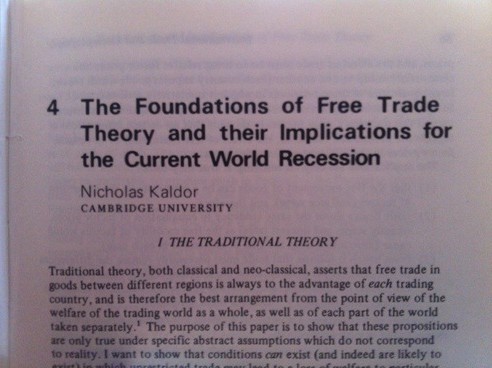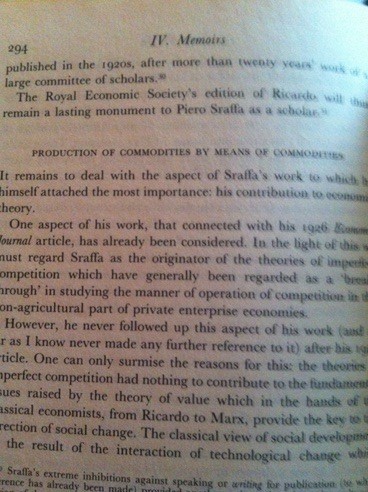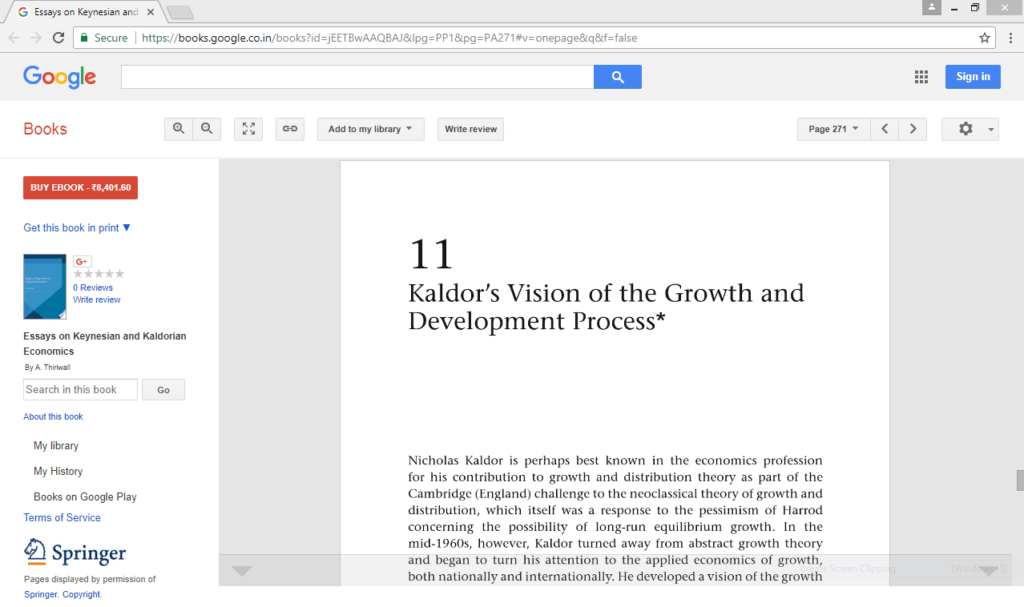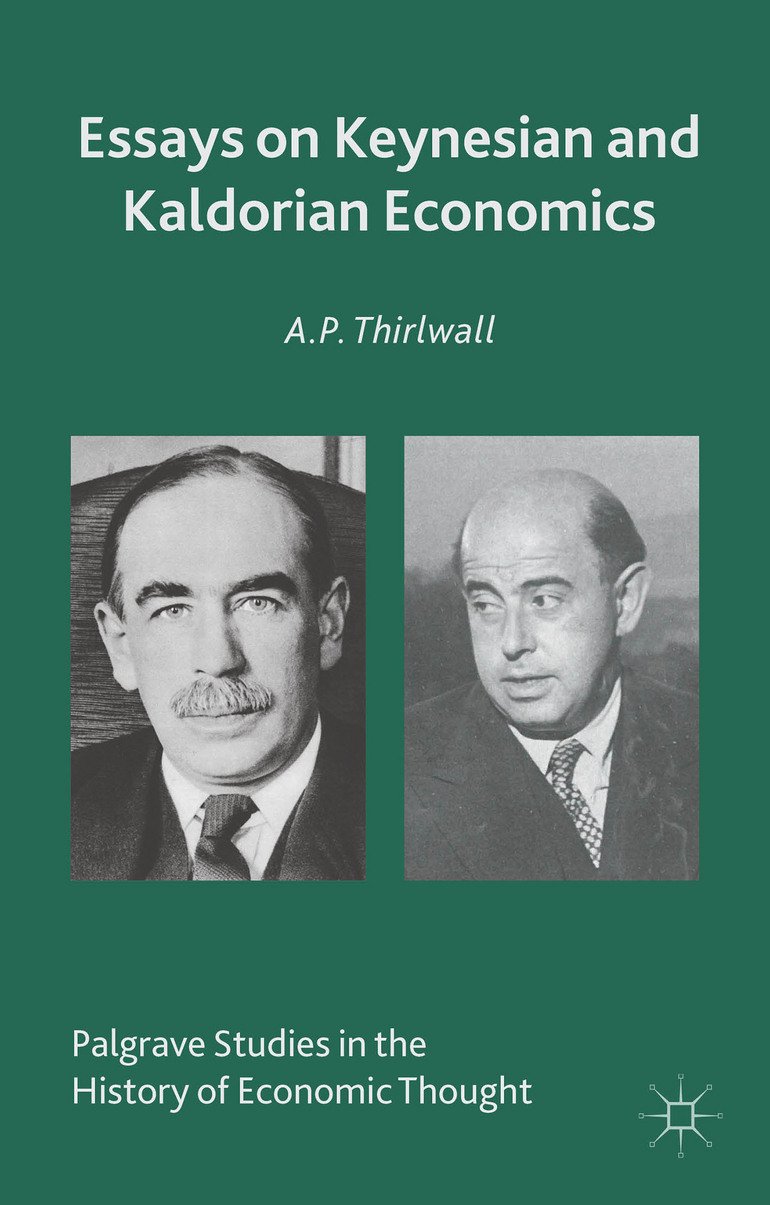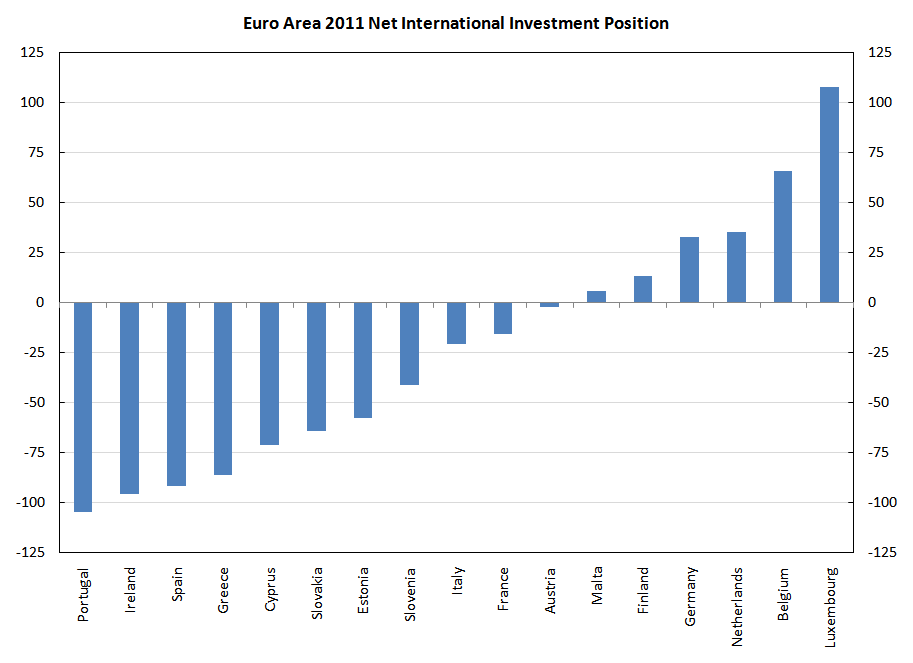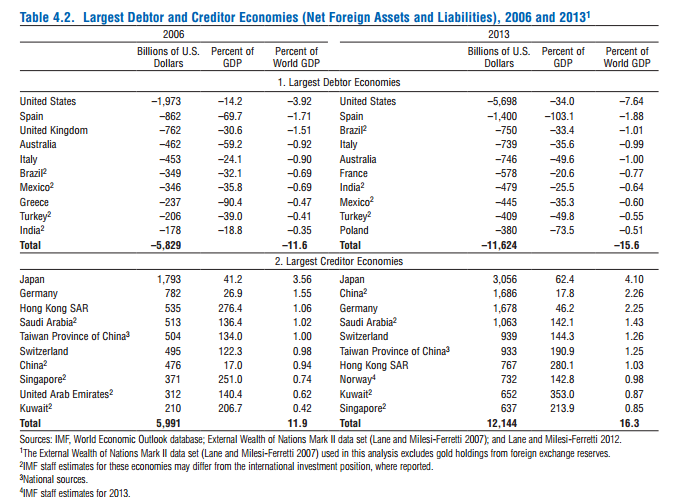This is the basis of the doctrine of the ‘foreign trade multiplier’, according to which the production of a country will be determined by the external demand for its products and will tend to be that multiple of such demand which is represented by the reciprocal of the proportion of internal incomes spent on imports. This doctrine asserts the very opposite of Say’s Law: the level of production will not be confined by the availability of capital and labour; on the contrary, the amount of capital accumulated, and the amount of labour effectively employed at any one time, will be the result of the growth of external demand over a long series of past periods, which permitted the capital accumulation to take place that was required to enable the amount of labour to be employed and the level of output to be reached which were (or could be) attained in the current period.
Keynes, writing in the middle of the Great Depression of the 1930s, focused his attention on the consequences of the failure to invest (due to unfavourable business expectations) in limiting industrial employment below industry’s attained capacity to provide such employment; and he attributed this failure to excessive saving (or an insufficient propensity to consume) relative to the opportunities for profitable investment. Hence his concentration on liquidity preference and the rate of interest, as the basic cause for the failure of Say’s Law to operate under conditions of low investment opportunities and/or excessive savings, and the importance he attached to the savings/investment multiplier as a short-period determinant of the level of production and employment.
On retrospect I believe it to have been unfortunate that the very success of Keynes’s ideas in connection with the savings/investment multiplier diverted attention from the ‘foreign trade multiplier’, which, over longer periods, is a far more important and basic factor in explaining the growth and rhythm of industrial development. For over longer periods Ricardo’s presumption that capitalists only save in order to invest, and that hence the proportion of profits saved would adapt to changes in the profitability of investment, seems to me more relevant; the limitation of effective demand due to oversaving is a short-run (or cyclical) phenomenon, whereas the rate of growth of’external’ demand is a more basic long-run determinant of both the rate of accumulation and the growth of output and employment in the ‘capitalist’ or ‘industrial’ sectors of the world economy.
Capitalism and industrial development: some lessons from Britain’s experience, Camb. J. Econ. (1977) 1 (2): 193–204, link
Tag Archives: nicholas kaldor
The World Balance Of Payments Constraint: Nicholas Kaldor Explaining The Way The World Works
Thirlwall’s Law is counter-intuitive and comes across as shocking. It says that the growth of a nation’s economy is directly proportional to the rate of exports and inversely related to the income elasticity of imports.
The reason it comes as shocking and difficult to believe is that our planet, with all inhabitants and institutions considered resident cannot export (unless there are non-residents such as aliens), but the world still grows.
Now there are several pitfalls in this argument. First, Thirlwall’s law doesn’t fail because the expression for growth rate is indeterminate. Rate of exports is indeterminate and the income elasticity of imports is indeterminate.
So we have
growth = inderminate/indeterminate
Second, the world does not have a central government. So the world as a whole is not comparable to a closed economy with a government.
There is a way in which the world as a whole is balance-of-payments constrained. The argument is by Nicholas Kaldor. In his 1980 article Foundations And Implications Of Free Trade Theory, written in Unemployment In Western Countries – Proceedings Of A Conference Held By The International Economics Association At Bischenberg, France, Kaldor makes the argument for the world balance-of-payments constraint.
Nicholas Kaldor on free trade
In a recent article on the ‘Causes of Growth and Recession in World Trade’,1 T. F. Cripps has demonstrated that a country is not ‘balance of payments constrained’ if its full employment imports, M*, are less that its import capacity M̅ (as determined by its earning from exports). Such a country is free to choose the level of domestic demand which it considers optimal for its own circumstances,2 whereas the other countries from whom M* > M̅, must, under conditions of free trade, reduce their output and employment below the full employment level, and import only what they can afford to finance. He then shows that the sum of imports of the ‘unconstrained’ countries determine the attainable level of production and employment of the ‘constrained’ countries, and the remedy for this situation requires measures that increase the level of ‘full-employment’ imports or else reduce the export share of the ‘unconstrained countries’. The ‘rules of the game’ which would be capable of securing growth and stability in international trade, and of restoring the production of the ‘constrained’ countries to full employment levels, may require discriminatory measure of import control, of the type envisaged in the famous ‘scarce currency clause’ of the Bretton Woods agreement.
In the absence of such measures all countries may suffer a slower rate of growth and a lower level of output and employment, and not only the group of countries whose economic activity is ‘balance-of-payments constrained’. This is because the ‘surplus’ countries’ own exports will be lower with the shrinkage of world trade, and they may not offset this (or not adequately) by domestic reflationary measures so that their imports will also be lower. Provided that the import regulations introduced relate to import propensities (i.e. to the relation of imports to domestic output) and not to the absolute level of imports as such, the very fact that such measures will raise the trade, production and employment of the ‘constrained’ countries will mean that the volume of exports and domestic income of the ‘unconstrained’ countries will also be greater, despite the downward change in their share of world exports.3
Footnotes:
1Cambridge Economic Policy Review (March 1978), pp, 37-43.
2Owing to the widespread view according to which a given increase in effective demand is more ‘inflationary’ in its consequences if brought about by budgetary measure than if it is the result of additional investment or exports (irrespective of any limitations of import capacity) the inequality or potential inequality in its payments balance may cause a surplus country to regard a lower level of domestic demand as ‘optimal’ in the first case than in the second case.
3In other words, if countries whose ‘full employment’ balance of payments shows a surplus because M* < α W (where M* is the level of full employment imports, α is the share of a particular country’s exports of in world trade W) after a reduction of α to α̂ (α̂ < α) through the imposition of discriminatory measures, the country will still be better off if α̂ W* > α W where W* is the volume of world trade generated under full employment conditions.
[boldening mine]
What Kaldor is saying that because of balance of payments constraint of economies, the world as a whole has a slower growth because surplus nations do not expand domestic demand to the level needed. He is also saying that import controls raise imports rather than reduce them (this because of higher national income) and the exporters’ exports will also increase (even though their share is reducing.).
So the world as an built-in deflationary bias in the way it works.
Neochartalism, Balance Of Payments And Mainstream Economics
There have been many critiques of Neochartalism. Almost all of them, simply ignore the most important issue which makes Neochartalism the so-called “Modern Monetary Theory”, a chimera. A delusion.
Bill Mitchell has written a post on his blog about the balance-of-payments constraint, which among other things makes fun of physical appearance of Nicholas Kaldor. In that he correctly recognizes Nicholas Kaldor as the main proponent of this idea. Mitchell rightly represents Kaldor’s views:
In fact, Kaldor thought that exports were the only true ‘exogenous’ source of income growth, given that household consumption and business investment are considered to be ‘endogenously’ driven by fluctuations in (national) income itself.
In the post, Bill Mitchell doesn’t offer any argument as to why the literature behind it is supposedly wrong. He quotes Australia’s example but doesn’t recognize that Australia’s growth rate fits Thirlwall’s law. Had Australia grown much faster, its international indebtedness would grow to a much bigger size than now, which means its growth is limited by the balance of payments constraint.
Instead, Mitchell’s main point is:
While Thirlwall adopted a Keynesian position, the ‘balance of payments constraint’ he defined has underpinned the obsession with export-led growth strategies. It is a case where the IMF and others have co-opted the ‘Keynesian’ literature to impose neo-liberal solutions on nations.
In part, this is because ‘Keynesian’ literature was flawed.
Supposedly, its the Kaldorians who succumb into policies of the IMF because of their confusions! This is quite funny, given that Nicholas Kaldor was quite opposed to free trade which imposes a huge constraint on nation’s fortunes. In fact Kaldor and his colleagues at Cambridge were advocating import controls for Britain, which is obviously not a right-wing solution and was opposed by all.
One of my favourite articles is Foundations And Implications Of Free Trade Theory by Nicholas Kaldor, written in Unemployment In Western Countries – Proceedings Of A Conference Held By The International Economics Association At Bischenberg, France.
Nicholas Kaldor on free trade
Kaldor main point in the essay is a major opposite to the doctrine of free trade. Free trade is a policy of international organizations such as the IMF. So it’s not Nicholas Kaldor and others who are being fooled by the IMF, but Neochartalists themselves who think that if nations simply float their currencies, they get rid of their external constraint.
Here’s Kaldor:
Owing to increasing returns in processing activities (in manufactures) success breeds further success and failure begets more failure. Another Swedish economist, Gunnar Myrdal called this’the principle of circular and cumulative causation’.
It is as a result of this that free trade in the field of manfactured goods led to the concentration of manufacturing production in certain areas – to a ‘polarization process’ which inhibits the growth of such activitiesin some areas and concentrates them on others.
So as you see, there is an opposition to the “consensus” view. But according to Neochartalists, there is no problem with free trade: just expand domestic demand by fiscal policy. Imports are benefits, exports are costs according to them!
The main point of the post is that it is Neochartalists whose views are orthodox, not other Post-Keynesians following the work of Nicholas Kaldor. It’s funny of them to assert the other way. Look at it this way: opposition to free trade requires import controls, tariffs and things such as that. Is that the mainstream view – to put tariffs? However it is funny if you see a Neochartalist arguing against free trade as it would mean an inconsistency. If fiscal policy alone can bring full employment, why oppose free trade?
Kaldor’s Footnote And Kaldor On Sraffa
The world is more Kaldorian than Keynesian. After the crisis, Keynes became popular again but his Cambridge descendent Nicholas Kaldor is hardly remembered by the economics community. Even his biographers have some memory loss of him.
Anthony Thirlwall and John E. King are biographers of Nicholas Kaldor. Superb books.
There’s a chapter Talking About Kaldor: An Interview With John King in Anthony Thirlwall’s book Essays on Keynesian and Kaldorian Economics. There’s an interesting discussion on money endogeneity (Google Books link):
J.E.K. … I wonder if Kaldor would have gone as far as Moore in arguing that the money supply curve is horizontal.
Anthony Thirlwall replies saying he would have argued that the supply of money is elastic with respect to demand, instead of quoting him. Here’s Nicholas Kaldor stating explicitly in a footnote in Keynesian Economics After Fifty Years, in the book, Keynes And The Modern World, ed. George David Norman Worswick and James Anthony Trevithick, Cambridge University Press, 1983, on page 36:
Diagrammatically, the difference in the presentation of the supply and demand for money, is that in the original version, (with M exogenous) the supply of money is represented by a vertical line, in the new version by a horizontal line, or a set of horizontal lines, representing different stances of monetary policy.
[italics: mine]
Anthony Thirlwall is one of the commenter in the book chapter. The book is proceedings of a conference on Keynes.
But that’s not enough. Turn to page 363 of the book.
A.P.T. He had a very high regard for Sraffa but he never wrote on this topic.
J.E.K. Not something that would really have concerned him very much? Too abstract and too removed from reality?
A.P.T. Probably, yes. It is quite interesting that Sraffa was his closest friend, both personal and intellectual, and they used to meet very regularly – almost every day when Sraffa was alive. But there’s no evidence that they ever discussed Production of Commodities by Means of Commodities.
J.E.K. That’s amazing. There’s certainly no evidence that he ever wrote anything on those questions.
A.P.T. There’s no evidence that he wrote anything, or that indeed he really understood Sraffa. Well, he had the broad thrust, but I don’t know that he ever read it carefully, or understood the implications.
In Volume 9, of Kaldor’s Collected Works, there are two memoirs. One of Piero Sraffa and the other on John von Neumann.
Nicholas Kaldor on Piero Sraffa
Interestingly the editors and F. Targetti (another biographer) and A.P. Thirlwall!
I guess if you know a person so closely – like the biographers do, of Kaldor- you tend to forget a few things about them.
Kaldor And Oil
… a more fundamental proposition [is] that any large change in commodity prices – irrespective of whether it is in favour or against the primary producers – tends to have a dampening effect on industrial activity; it retards industrial growth in both cases, instead of retarding it in the one case and stimulating it in the other. There are, as I shall now show, two reasons for this. It is partly a consequence of the fact that whilst a fall in commodity prices tends to be an effective instrument in moving the terms of trade against the primary producers, a rise in commodity prices is not likely to be nearly as effective in moving the terms of trade in their favour. It is partly also a consequence of an asymmetry in the behavioural consequences as between a gain and a loss of real income, the result of which is that any sudden shift in the distribution of world income, caused by a change in the terms of trade, is likely to have an adverse effect on industrial demand (in real terms).
The important cause of the first asymmetry is that while commodity prices are demand-determined, industrial prices are cost-determined, and because of that the rise in commodity prices has a very powerful inflationary effect operating on the cost side. The rise in the price of basic materials and fuels is passed through the various stages of production into the final price with an exaggerated effect – it gets ” blown up ” on the way by a succession of percentage additions to prime costs which mean, in effect, an increase in cash margins at each stage. This causes (initially) a rise in the share of profits in the value added by manufacturing which in itself is a powerful factor (in countries where trade union power is strong) in causing pressure for wage increases. Added to this is the price-induced rise in wages caused by what Sir John Hicks called “Real Wage Resistance” – the reluctance of workers to accept a cut in their standard of living (which is not paralleled by similar reluctance to accept a rise). For these reasons a swing in the terms of trade in favour of the primary producers is not likely to last for long. The industrial sector with its superior market power, resists any compression of its real income by countering the rise in commodity prices through a cost-induced inflation of industrial prices.
Moreover – and here we come to the second reason mentioned above – the inflation itself has a deflationary effect on the effective demand for industrial goods in real terms, partly because the rise in the profits of producers in the primary sector is not matched by a rise in their expenditure – this was particularly marked on the present occasion through the vast accumulation of financial assets by the oil producers – and partly because the governments of most, if not all, of the industrial countries are likely to react to their domestic inflation by fiscal and monetary measures which reduce consumer demand and put a brake on industrial investment. Thus the rise in commodity prices may well result in a wage/price spiral-type of inflation in the industrial sectors which in turn causes industrial activity to be restricted. The latter tends to eliminate the shortages and thereby reverse the trend in commodity prices. A good example of this has been the U.S. inflation of I972-3, which was clearly cost induced but not wage-induced; it was caused by the rise in commodity prices (with wage rises trailing behind the rise in living costs) and which led to strongly restrictionist monetary policies in order to counter the inflation, which in turn brought about a considerable economic recession. (Somewhat later similar restrictionist policies were adopted by governments of other leading countries, such as Germany and Japan.)
If the above analysis is correct, the market mechanism is a highly inefficient regulator for securing continuing adjustment between the growth of availabilities and the growth in requirements for primary products in a manner conducive to the harmonious development of the world economy.
The emergence of commodity surpluses which should, in principle, lead to accelerated industrialisation may have a perverse effect by diminishing effective demand for industrial products. Similarly the emergence of shortages which should accelerate the growth of availabilities of primary products through improvements in the terms of trade may lead instead to an inflation of manufacturers’ prices which tends to offset the improvement in the terms of trade, and by its dampening effect on industrial activity, worsens the climate for new investment in both the primary sector and the industrial sector.
– Kaldor, Nicholas. 1976. “Inflation and Recession in the World Economy”. The Economic Journal 86 (344). [Royal Economic Society, Wiley]: 703–14. doi:10.2307/2231447. Link
The Kaldor-Verdoorn Effect
Brian Romanchuk has a nice post on how the case for productivity is something which is overstated by economists. There’s less discussion in the econoblogosphere on this. Here I’ll add a few things with a slightly different perspective.
Sometime in the historic past, nations’ economies started diverging. Some nations’ fortunes rose while others lagged behind. Nations which became rich saw high rises in productivity. It’s easy to then conclude that productivity is the raison d’être for the success or failure of nations. In fact this is what Greg Mankiw says in his textbook Principles Of Macroeconomics, 7th Edition, page 13:
The differences in living standards around the world are staggering …
What explains these large differences in living standards among countries and over time? The answer is surprisingly simple. Almost all variation in living standards is attributable to differences in countries’ productivity—that is the amount of goods and services produced by each unit of labor input. In nations where workers can produce a large quantity of goods and services per hour, more people enjoy a high standard of living; in nations where workers are less productive, most people endure a more meager existence. Similarly, the growth rate of a nation’s productivity determines the growth of its average income.
The fundamental relationship between productivity and living standards is simple, but its implications are far-reaching. If productivity is the primary determinant of living standards, other explanations must be of secondary importance … some commentators have claimed that increased competition from Japan and other countries explained the slow growth in U.S. incomes during the 1970s and 1980s. Yet the real villain was not competition from abroad but flagging productivity growth in the United States.
[bold in original, italics mine]
So although it cannot be denied that rich nations have seen rise in productivity, the above story entirely misses the reverse causality – i.e., from production to productivity. And because of that, it entirely misses the cause of success and failure of nations.
Nicholas Kaldor rediscovered the relation between rise in output and rise in productivity (which can be attributed to Petrus Johannes Verdoorn) in 1966 and interpreted the causality right: from rate of growth of production to the rate of growth of productivity. The main reason given was “learning by doing”.
This still leaves open the question about what determines production itself. Unlike the supply-side models of neoclassical theory, Kaldorians tell a story about a demand-led growth and the balance of payments constraint being the most important determinant of economic growth. Some nations had the fortune of growing fast earlier in history and in this process of cumulative causation became more competitive in the process. This not only increased their fortunes but immiserated other nations. This is because poor nations would get stuck with a balance of payments constraint and this would affect their competitiveness. Competitiveness can either be price-competitiveness or non-price competitiveness. Price competitiveness depends on pricing goods and services in international markets. This in turn depends on productivity. So nations which got an early lead in history saw rise in production and hence productivity via the Kaldor-Verdoorn process and also gained in price-competitiveness.
There is a feedback effect here. Do you see it? That’s circular and cumulative causation. The effect can be better understood by writing a model such as as done by Mark Setterfield in his chapter titled Endogenous Growth: A Kaldorian Approach in the book The Oxford Handbook Of Post-Keynesian Economics, Volume 1, Theory And Origins.
Usually the story is told with price-competitiveness. I am unaware of any model which also includes non-price competitiveness in the story.
Anyway, to conclude, cheering for productivity is not going to help the world economy. The solution is to increase production: productivity will rise when production rises. The standard story as told in Mankiw’s textbook is erroneous.
Kaldor’s Vision Of The Growth And Development Process According To Thirlwall
Anthony Thirlwall’s new book Essays on Keynesian and Kaldorian Economics is out. It has a nice chapter (chapter 11) originally written by Thirlwall himself from 1991 titled Kaldor’s Vision Of The Growth And Development Process. The description from introduction (pdf from Palgrave’s website) is a good summary:
Essay 11 outlines Kaldor’s vision of the growth and development process – a topic that concerned him for most of his academic life after the Second World War. The Essay covers his growth laws; his export-led growth model incorporating the notion of ‘circular and cumulative causation’, and his two-sector model of the interrelationship between the agricultural (primary product) and industrial sectors of the world economy. Central to Kaldor’s vision was the distinction to be made between increasing returns activities on the one hand (manufacturing industry) and diminishing returns activities on the other (land-based activities such as agriculture and mining). This distinction lies at the heart of his three growth laws that (i) manufacturing is the engine of growth because of (ii) static and dynamic returns to scale in industry (also known as Verdoorn’s law), and (iii) increases in productivity outside of manufacturing as resources are drawn from diminishing returns activities. The question, of course, is what determines industrial growth in the first place. Kaldor’s answer was that it is the prosperity and growth of the agricultural sector in the early stages of development, and then export growth in the later stages. In an open economy, exports are the only true [exogenous] component of aggregate demand. Consumption and investment are largely endogenous.
This view of the role of exports is the basis of his ‘regional’ export-led growth model with cumulative features which has four structural equations: (i) output growth as a function of export growth; (ii) export growth as a function of changing competitiveness and income growth outside the region; (iii) competitiveness as a function of productivity growth, and (iv) productivity growth as a function of output growth (Verdoorn’s Law). Depending on the parameters of the model, regional growth rates may diverge or converge (see Essay 12). It is also possible to introduce a balance of payments constraint into the model which, if relative prices (or real exchange rates) don’t change in the long run, leads to the result that growth will approximate to the rate of growth of exports relative to the income elasticity of demand for imports, which is the dynamic analogue of the static Harrod foreign trade multiplier, which Kaldor argued was a more important multiplier than the Keynesian closed economy multiplier for understanding the pace and rhythm of growth in open economies.
In a closed economy, however, growth by definition cannot be determined by exports. The world as a whole is a closed economy, and Kaldor lectured in Cambridge for many years on a two-sector model of world growth in which the growth of the industrial sector of the world economy is fundamentally determined by the rate of land-saving innovations in agriculture as an offset to diminishing returns in that sector. The model shows that if growth is to be maximised, there must be an equilibrium terms of trade between the two sectors, otherwise growth will be demand constrained if agricultural prices are ‘too low’, or supply constrained if agricultural prices are ‘too high’. Kaldor himself never brought the model to fruition in published form, but attempts have been made to formalise it by Targetti (1985) and myself (see Essay 13).
Google Books preview below.
click to preview on Google Books’ site
Anthony Thirlwall’s New Book On Keynesian And Kaldorian Economics
During the global economic and financial crisis Keynes became popular again but Nicholas Kaldor’s ideas and the mention of the man himself didn’t take off as much. It’s unfortunate, as Kaldor played a huge role in the development of Keynesian economics itself. Kaldor’s own ideas are a subject of its own. Anthony Thirlwall is releasing a new collection of essays on Keynes and Kaldor in a book titled Essays on Keynesian and Kaldorian Economics to be published by Palgrave Macmillan.
Book website here
Description:
This volume of essays contains sixteen papers that the author has written over the last forty years on various aspects of the life and work of John Maynard Keynes and Nicholas Kaldor. The essays cover both theoretical and applied topics, and highlight the continued relevance of Keynesian and Kaldorian ideas for understanding the functioning of capitalist economies. Kaldor was one of the first economists to be converted to the Keynesian revolution in the mid-1930s, and he never lost the faith, so there was a strong affinity between them. But while Keynes revolutionised employment theory, Kaldor’s major concern in the latter part of his life was with the theory and applied economics of economic growth. The papers on Keynes mainly relate to defending Keynesian economics against his classical and monetarist critics and showing how Keynesian ideas relate to developing economies and the functioning of the world economy in general. The papers on Kaldor give a sketch of his life and role as policy advisor, and outline his vision of the growth and development process within regions; within countries, and also the world economy as a whole.
Table of Contents
Introduction
- Keynesian Economics after Fifty Years; N. Kaldor
- A ‘Second Edition’ of Keynes’ General Theory (writing as John Maynard Keynes)
- Keynesian Employment Theory is Not Defunct
- The Renaissance of Keynesian Economics
- The Relevance of Keynes Today with Particular Reference to Unemployment in Rich and Poor Countries
- Keynes, Economic Development and the Developing Countries
- Keynes and Economic Development
- A Keynesian View of the Current Financial and Economic Crisis in the World Economy (an interview with John King)
- Nicholas Kaldor: A Biography
- Kaldor as a Policy Adviser
- Kaldor’s Vision of the Growth and Development Process
- A Model of Regional Growth Rate Differences on Kaldorian Lines (with R. Dixon)
- A General Model of Growth and Development on Kaldorian Lines
- A Plain Man’s Guide to Kaldor’s Growth Laws
- Testing Kaldor’s Growth Laws across the Countries of Africa (with Heather Wells)
- Talking about Kaldor (an interview with John King)
Sergio Cesaratto’s Debate With Marc Lavoie On Whether The Euro Area Crisis Is A Balance-Of-Payments Crisis
Sergio Cesaratto has a new paper Balance Of Payments Or Monetary Sovereignty? In Search Of The EMU’s Original Sin – A Reply To Lavoie. (html link, pdf link)
I obviously agree with Sergio Cesaratto.
As long as there is no supranational fiscal authority, a Euro Area nation’s economic success is more restricted by its exports than otherwise as there is no mechanism for fiscal transfers. The European Central bank can of course backstop and to some extent it has done so, but it cannot let fiscal policy of nations become independent of balance of payments beyond a certain extent. If it does so, nations’ public debt will rise together with net indebtedness to foreigners relative to output and this will become unsustainable. The European Central Bank (the Eurosystem less the domestic National Central Bank) will become a huge creditor and this will not be acceptable to the rest of the Euro Area. (There is of course the question whether this would be morally right but I do not think it is immoral beyond a limit).
To some extent, Mario Draghi has acted the opposite and pushed austerity, but one cannot assume unlimited power for the ECB (Eurosystem to be precise).
The other way to check that it is indeed a balance-of-payments crisis is to simply see the net international investment position of nations. This chart is from 2011 (intentionally chosen to be old).
The nations troubled most had huge net indebtedness to foreigners. If it is not a balance-of-payments crisis, how does one explain that countries such Germany and Luxembourg had far less troubles than Greece and Portugal?
Abstract of the paper:
In a recent paper Marc Lavoie (2014) has criticized my interpretation of the Eurozone (EZ) crisis as a balance of payments crisis (BoP view for short). He rather identified the original sin “in the setup and self-imposed constraint of the European Central Bank”. This is defined here as the monetary sovereignty view. This view belongs to a more general view that see the source of the EZ troubles in its imperfect institutional design. According to the (prevailing) BoP view, supported with different shades by a variety of economists from the conservative Sinn to the progressive Frenkel, the original sin is in the current account (CA) imbalances brought about by the abandonment of exchange rate adjustments and in the inducement to peripheral countries to get indebted with core countries. An increasing number of economists would add the German neo-mercantilist policies as an aggravating factor. While the BoP crisis appears as a fact, a better institutional design would perhaps have avoided the worse aspects of the current crisis and permitted a more effective action by the ECB. Leaving aside the political unfeasibility of a more progressive institutional set up, it is doubtful that this would fix the structural unbalances exacerbated by the euro. Be this as it may, one can, of course, blame the flawed institutional set up and the lack an ultimate action by the ECB as the culprit of the crisis, as Lavoie seems to argue. Yet, since this institutional set up is not there, the EZ crisis manifests itself as a balance of payment crisis.
Excerpt from the conclusion:
… To conclude, since the EZ is closer to a fixed exchange rate regime rather than to a viable, U.S.-style CU, the euro-crisis is akin to a classical BoP crisis. True, the existence of T2 and the possibility of some ECB backing to troubled local sovereign debts make some difference. However, the limits to an ultimate action by the ECB in connection to the absence of other institutions that compose a viable CU render its action necessarily restricted. One can, of course, blame the lack of these institutions and of an ultimate action by the ECB as the culprit of the crisis, as Lavoie and De Grauwe seem to maintain. Yet, since those institutions are not there, the EZ crisis manifests itself as a balance of payment crisis …
Finally, remember the balance-of-payments constraint manifests itself as lower domestic demand and output as much as financial crises.
In general — in other institutional setups, the importance of the government’s power to make drafts at its central bank is exaggerated. It is highly important of course, but problems of balance-of-payments restrain the power of governments in having a fiscal policy independent of what is happening in international trade. In the Euro Area, the lack of critique of the “Common Market” is striking. One can however see these discussions in the works of Nicholas Kaldor.
Unlimited TARGET2 power?
An important point in the current discussion is around the issue of limits of TARGET2. It is true that the TARGET2 system has large powers to absorb imbalances. The intra-Eurosystem debts need not be collateralized. However, when there is capital flight from a nation, banks become more indebted to their NCB. This process can go on for a long time but ultimately it is restricted by collateral banks can provide to their NCB for replenishing lost settlement balances. There is of course the ELA, Emergency Loan Assistance, but this too is limited beyond a point. There is a lot of politics involved here with some nations complaining unfairly on debtor nations’ use of the ELA, but beyond a certain point, their complaints may be fair.
To summarize, TARGET2 is a big shock absorber: beyond what any economist may have expected, but it cannot absorb shocks beyond a limit.
IMF’s World Economic Outlook On Global Imbalances
The IMF has released a couple of chapters from its upcoming World Economic Outlook. There is one chapter Are Global Imbalances At A Turning Point, which talks of not just “flow imbalances” (current account deficits/surpluses) but also “stock imbalances” (international investment positions).
There is a nice table with a lot of information (although it is interested in absolute indebtedness and misses out small countries with high indebtedness in the list but still good information).
The article stresses that flow imbalances are not just enough to analyse the macroeconomics but stock imbalances also need to be studied. Of course, in reality deficits/surpluses are not the true measures of imbalances as Nicholas Kaldor stressed in a footnote in his 1980 article The Foundations Of Free Trade Theory And Their Implications For The Current World Recession (published in Collected Essays Vol. 9):
Morever, the actual surpluses and deficits are not a proper measure of the potential size of such imbalances (and of the deflationary force they exert) since the countries who suffer from an excessive import propensity tend, on that account, to suffer from an insufficiency of domestic demand as well so their aggregate output or income is demand-constrained; they may, in addition be forced to follow a deflationary fiscal and monetary policy, and for both of these reasons, will import less from the surplus countries than they would do under full employment conditions.
The same reasoning is valid for stock imbalances as well. The true solution to reverse the imbalances without hurting aggregate demand is to rein in free trade and expand domestic demand by fiscal policies, especially by creditor nations but with so much orthodoxy around — especially from the IMF, there still is a long way to go. The global imbalances problem itself is the result of neoliberal policies promoted by the IMF.
